Abstract
1. Recordings were made from gastrocnemius medialis (GM), semitendinosus (ST) and tibialis anterior/extensor digitorum longus (TA/EDL) motor nerves during mechanical and electrical stimulation of the skin of the foot in decerebrated and spinalized rabbits. 2. GM motoneurones were excited from the heel and not from the toes, whereas TA/EDL responded to stimulation at the toes but not at the heel. ST also responded to electrical and mechanical stimulation at the toes, but there was a disparity between the effects of the two types of stimuli when they were applied at the heel: ST motoneurones fired in response to electrical stimulation of the heel but showed only an 'off' response to mechanical stimulation at this site. 3. The opioid antagonist naloxone caused a dose-dependent increase in all reflexes evoked by electrical stimulation of the skin. The heel-GM, toes-ST and toes-TA/EDL reflexes all increased to more than 3 times control levels with naloxone, which also caused significant decreases in the latencies of these reflex responses. On the other hand, the heel-ST response increased to just 1.4 times control levels and showed no decrease in latency with the opioid antagonist. 4. These data suggest that segmental withdrawal reflex pathways in the rabbit are suppressed by endogenous opioid peptides. This opioid-mediated inhibition seems to operate non-selectively on reflex pathways between cutaneous afferents and motoneurones.
Full text
PDF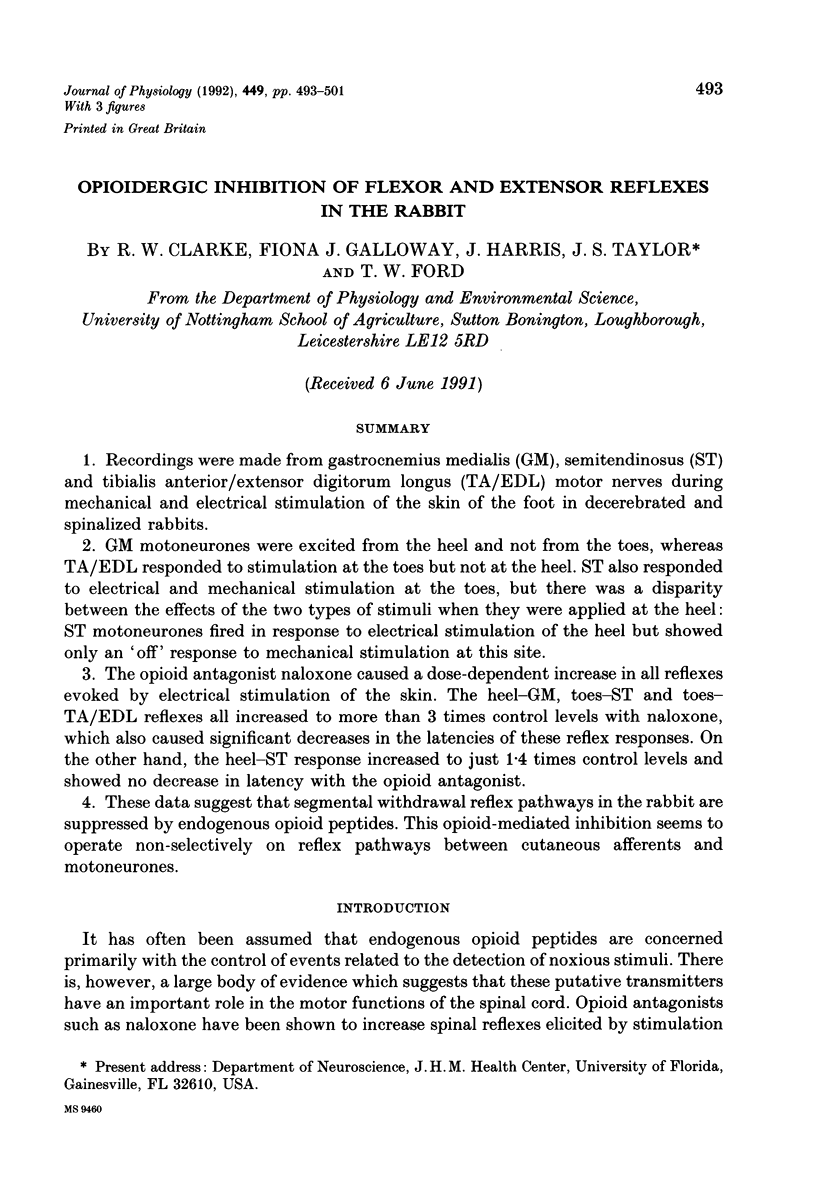

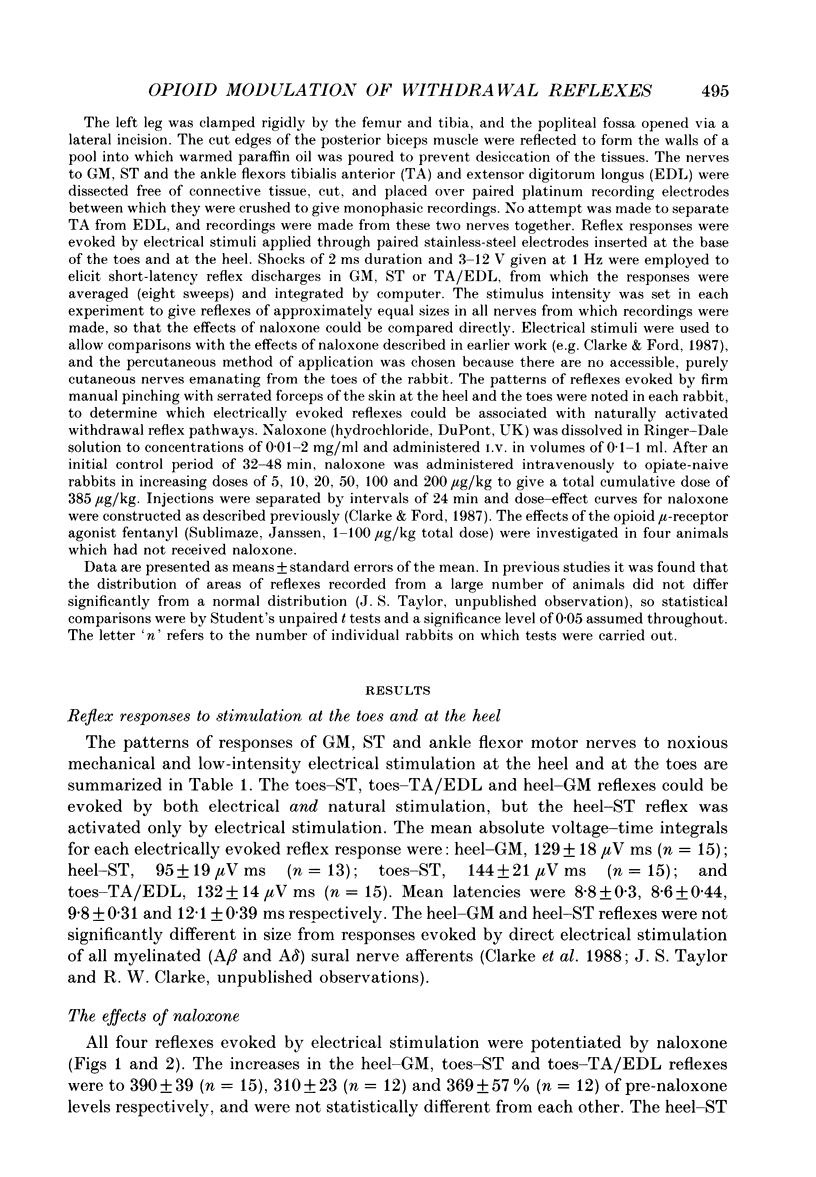
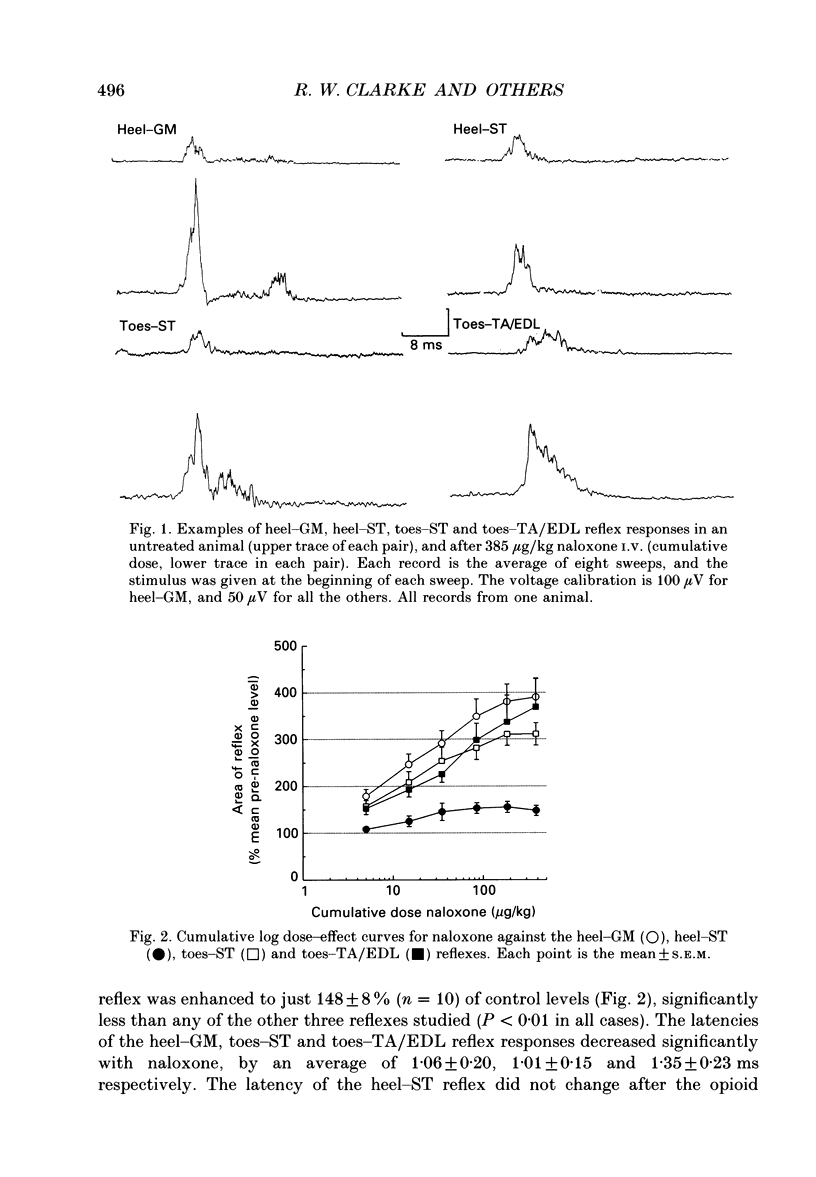
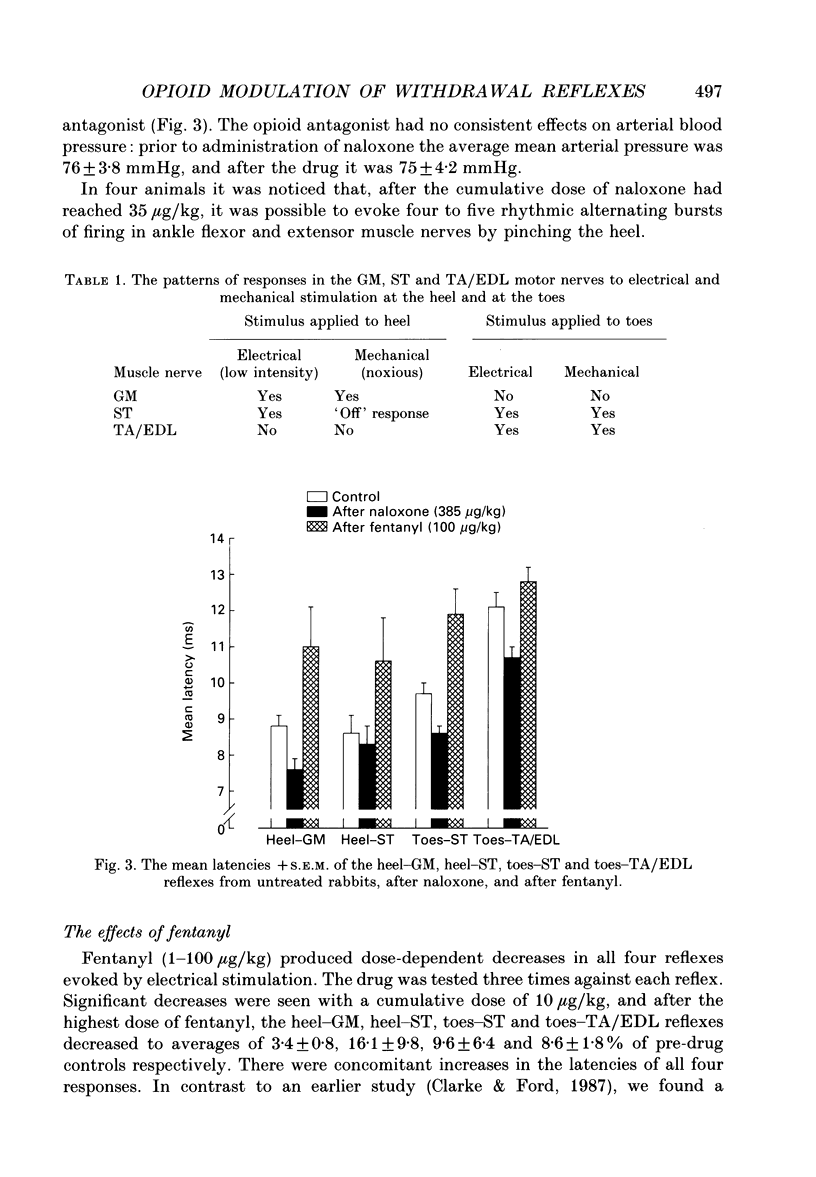
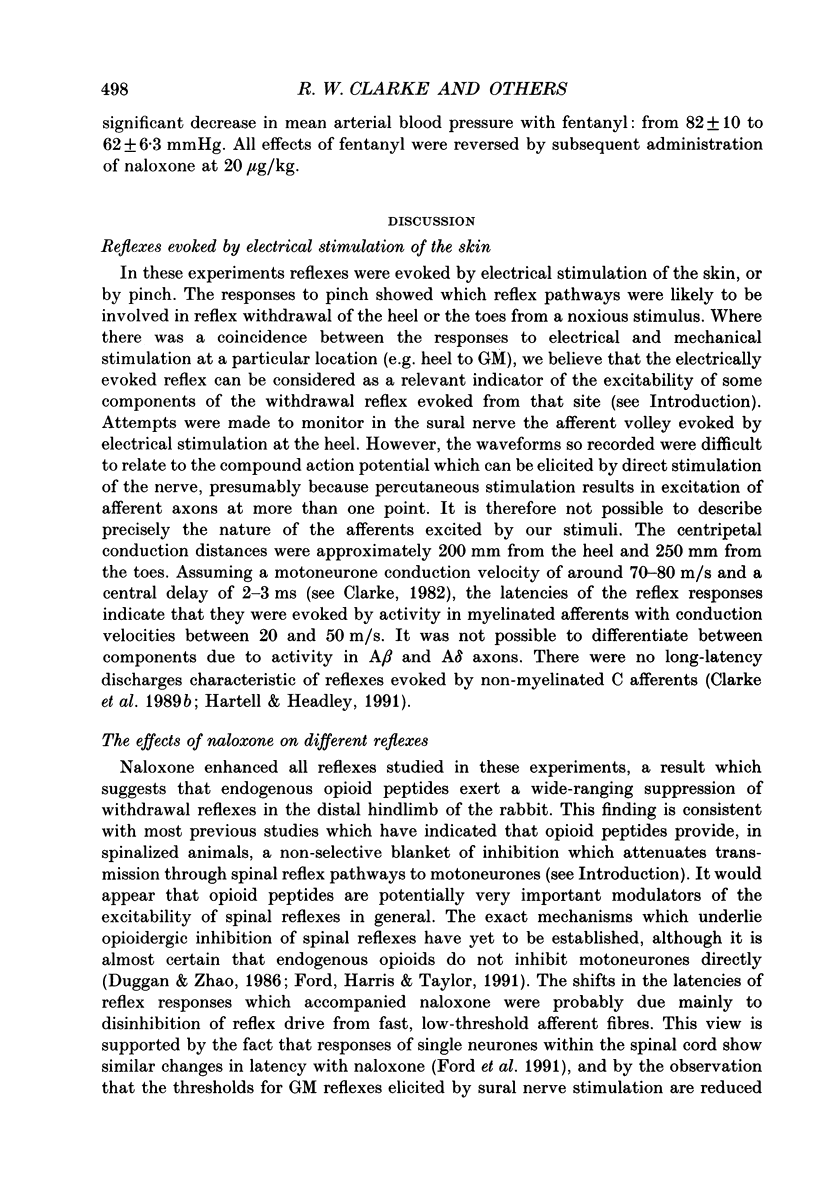

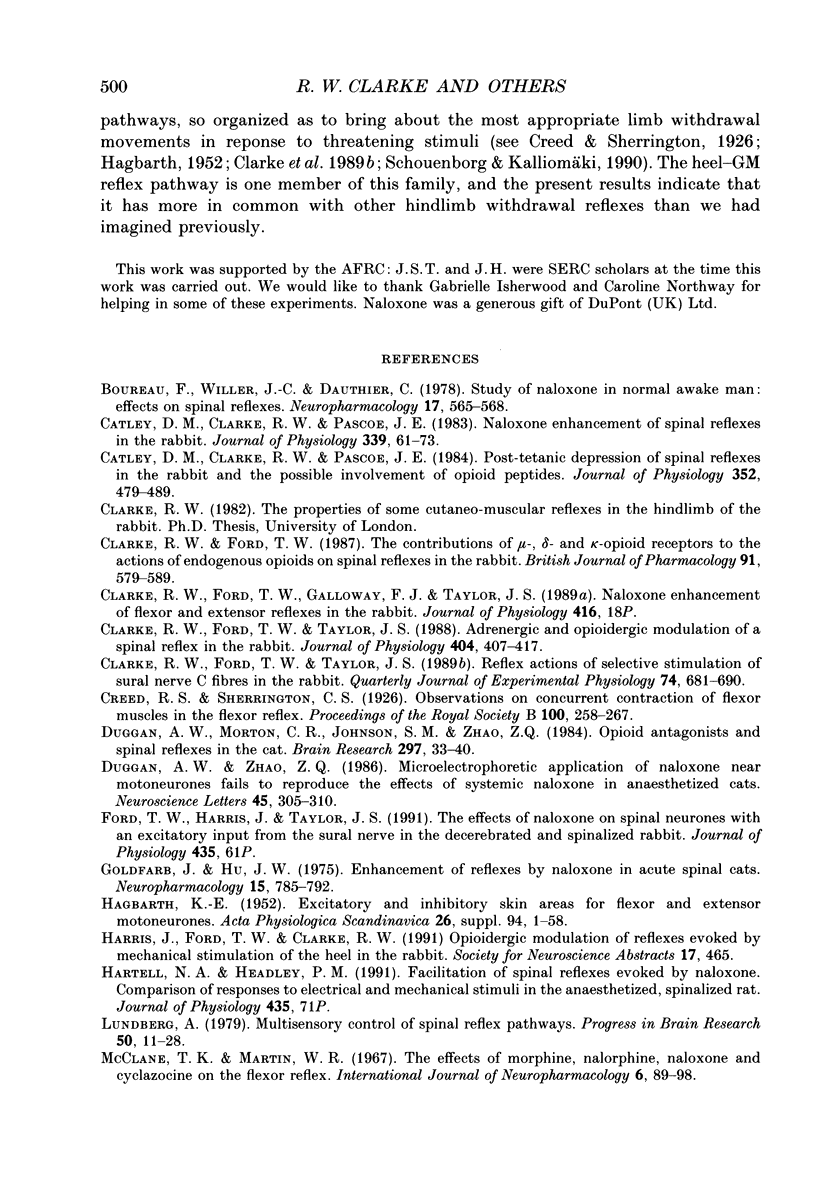

Selected References
These references are in PubMed. This may not be the complete list of references from this article.
- Boureau F., Willer J. C., Dauthier C. Study of naloxone in normal awake man: effects on spinal reflexes. Neuropharmacology. 1978 Aug;17(8):565–568. doi: 10.1016/0028-3908(78)90149-1. [DOI] [PubMed] [Google Scholar]
- Catley D. M., Clarke R. W., Pascoe J. E. Naloxone enhancement of spinal reflexes in the rabbit. J Physiol. 1983 Jun;339:61–73. doi: 10.1113/jphysiol.1983.sp014702. [DOI] [PMC free article] [PubMed] [Google Scholar]
- Clarke R. W., Ford T. W., Taylor J. S. Adrenergic and opioidergic modulation of a spinal reflex in the decerebrated rabbit. J Physiol. 1988 Oct;404:407–417. doi: 10.1113/jphysiol.1988.sp017296. [DOI] [PMC free article] [PubMed] [Google Scholar]
- Clarke R. W., Ford T. W., Taylor J. S. Reflex actions of selective stimulation of sural nerve C fibres in the rabbit. Q J Exp Physiol. 1989 Sep;74(5):681–690. doi: 10.1113/expphysiol.1989.sp003320. [DOI] [PubMed] [Google Scholar]
- Clarke R. W., Ford T. W. The contributions of mu-, delta- and kappa-opioid receptors to the actions of endogenous opioids on spinal reflexes in the rabbit. Br J Pharmacol. 1987 Jul;91(3):579–589. doi: 10.1111/j.1476-5381.1987.tb11251.x. [DOI] [PMC free article] [PubMed] [Google Scholar]
- Duggan A. W., Morton C. R., Johnson S. M., Zhao Z. Q. Opioid antagonists and spinal reflexes in the anaesthetized cat. Brain Res. 1984 Apr 9;297(1):33–40. doi: 10.1016/0006-8993(84)90540-7. [DOI] [PubMed] [Google Scholar]
- Duggan A. W., Zhao Z. Q. Microelectrophoretic administration of naloxone near motoneurones fails to reproduce the effects of systemic naloxone in anaesthetized cats. Neurosci Lett. 1984 Apr 6;45(3):305–310. doi: 10.1016/0304-3940(84)90243-x. [DOI] [PubMed] [Google Scholar]
- Goldfarb J., Hu J. W. Enhancement of reflexes by naloxone in spinal cats. Neuropharmacology. 1976 Dec;15(12):785–792. doi: 10.1016/0028-3908(76)90009-5. [DOI] [PubMed] [Google Scholar]
- HAGBARTH K. E. Excitatory and inhibitory skin areas for flexor and extensor motoneurons. Acta Physiol Scand Suppl. 1952;26(94):1–58. [PubMed] [Google Scholar]
- Lundberg A. Multisensory control of spinal reflex pathways. Prog Brain Res. 1979;50:11–28. doi: 10.1016/S0079-6123(08)60803-1. [DOI] [PubMed] [Google Scholar]
- McClane T. K., Martin W. R. Effects of morphine, nalorphine, cyclazocine, and naloxone on the flexor reflex. Int J Neuropharmacol. 1967 Mar;6(2):89–98. doi: 10.1016/0028-3908(67)90057-3. [DOI] [PubMed] [Google Scholar]
- Roppolo J. R., Booth A. M., De Groat W. C. The effects of naloxone on the neural control of the urinary bladder of the cat. Brain Res. 1983 Apr 4;264(2):355–358. doi: 10.1016/0006-8993(83)90841-7. [DOI] [PubMed] [Google Scholar]
- Schouenborg J., Kalliomäki J. Functional organization of the nociceptive withdrawal reflexes. I. Activation of hindlimb muscles in the rat. Exp Brain Res. 1990;83(1):67–78. doi: 10.1007/BF00232194. [DOI] [PubMed] [Google Scholar]
- Sherrington C. S. Flexion-reflex of the limb, crossed extension-reflex, and reflex stepping and standing. J Physiol. 1910 Apr 26;40(1-2):28–121. doi: 10.1113/jphysiol.1910.sp001362. [DOI] [PMC free article] [PubMed] [Google Scholar]


